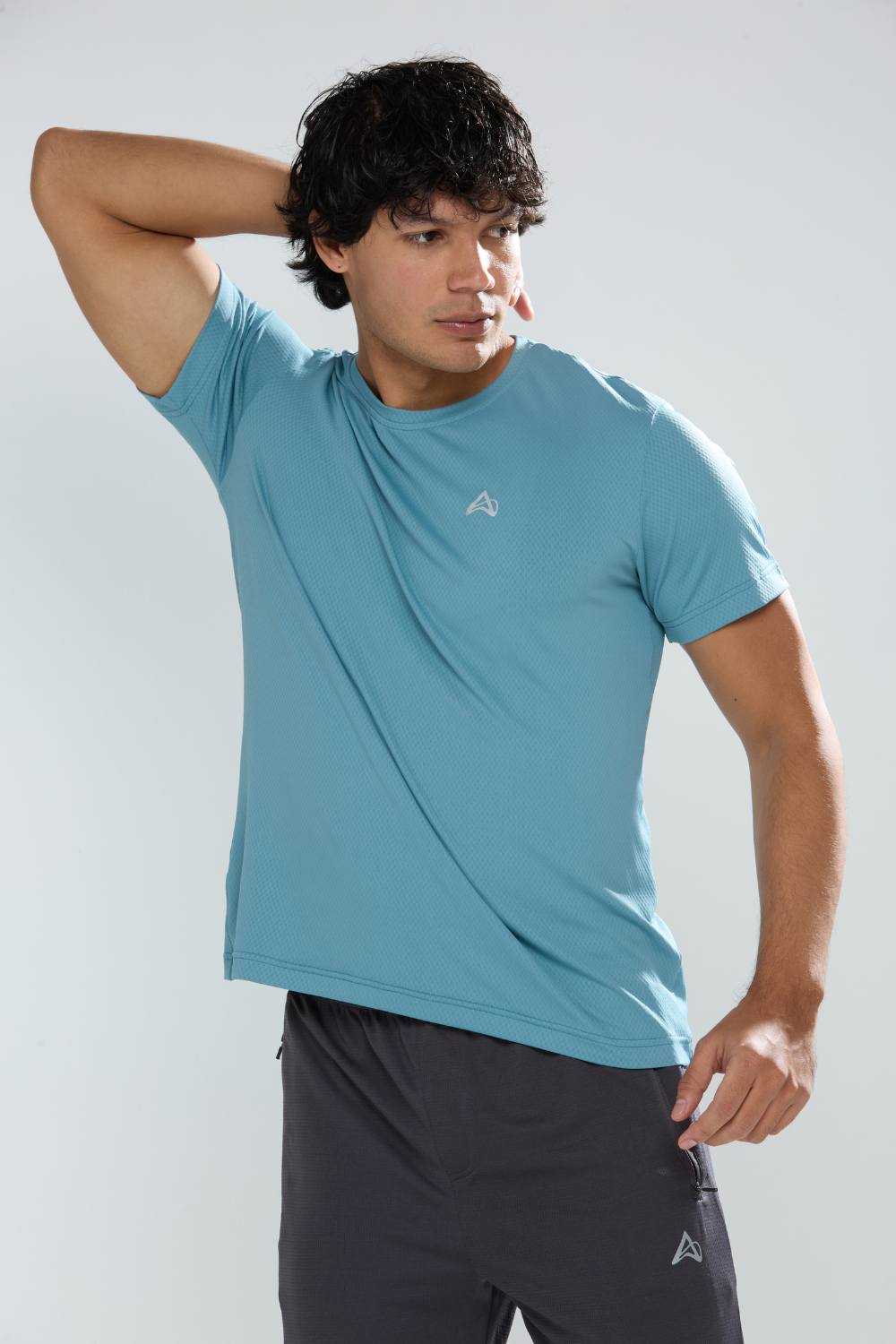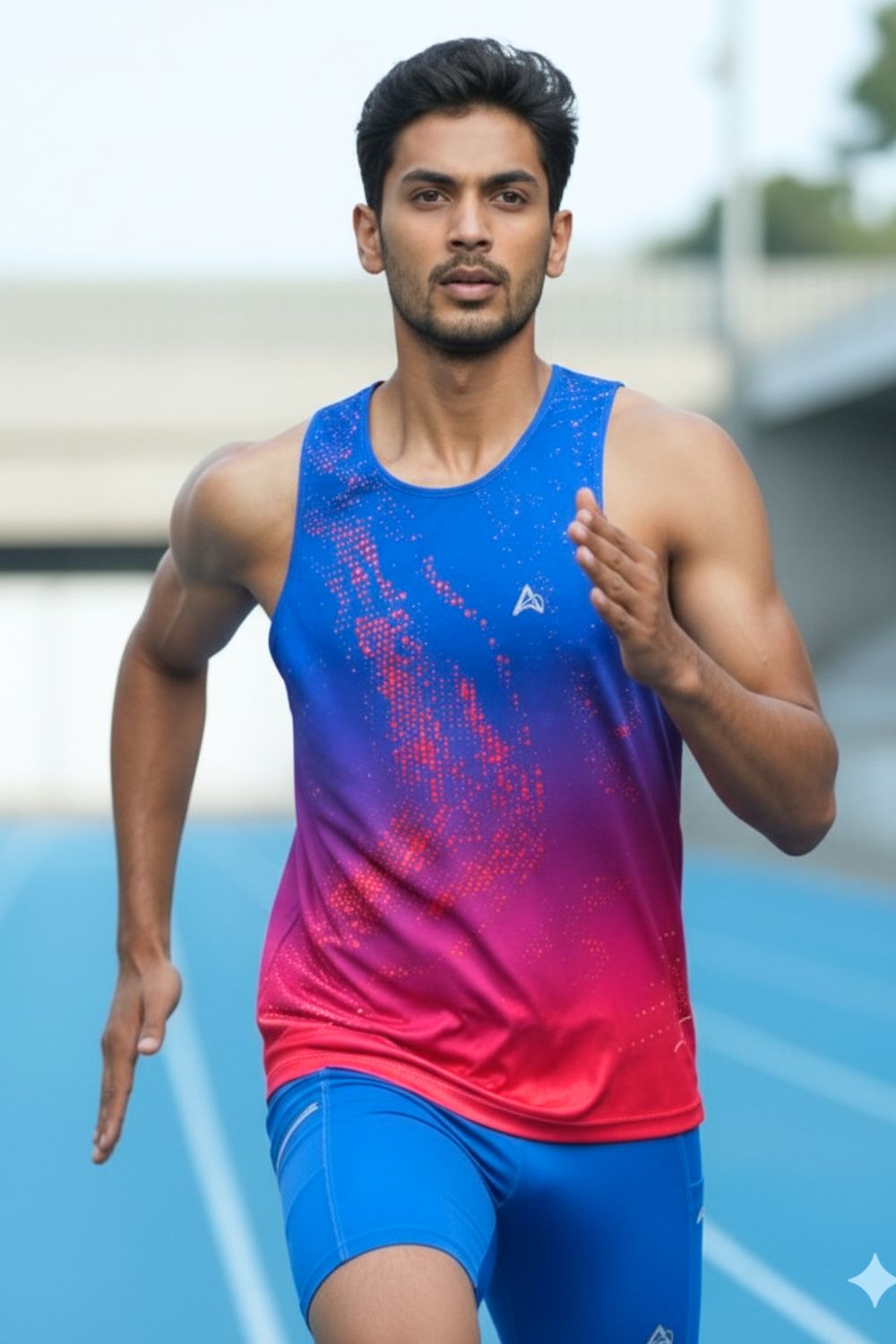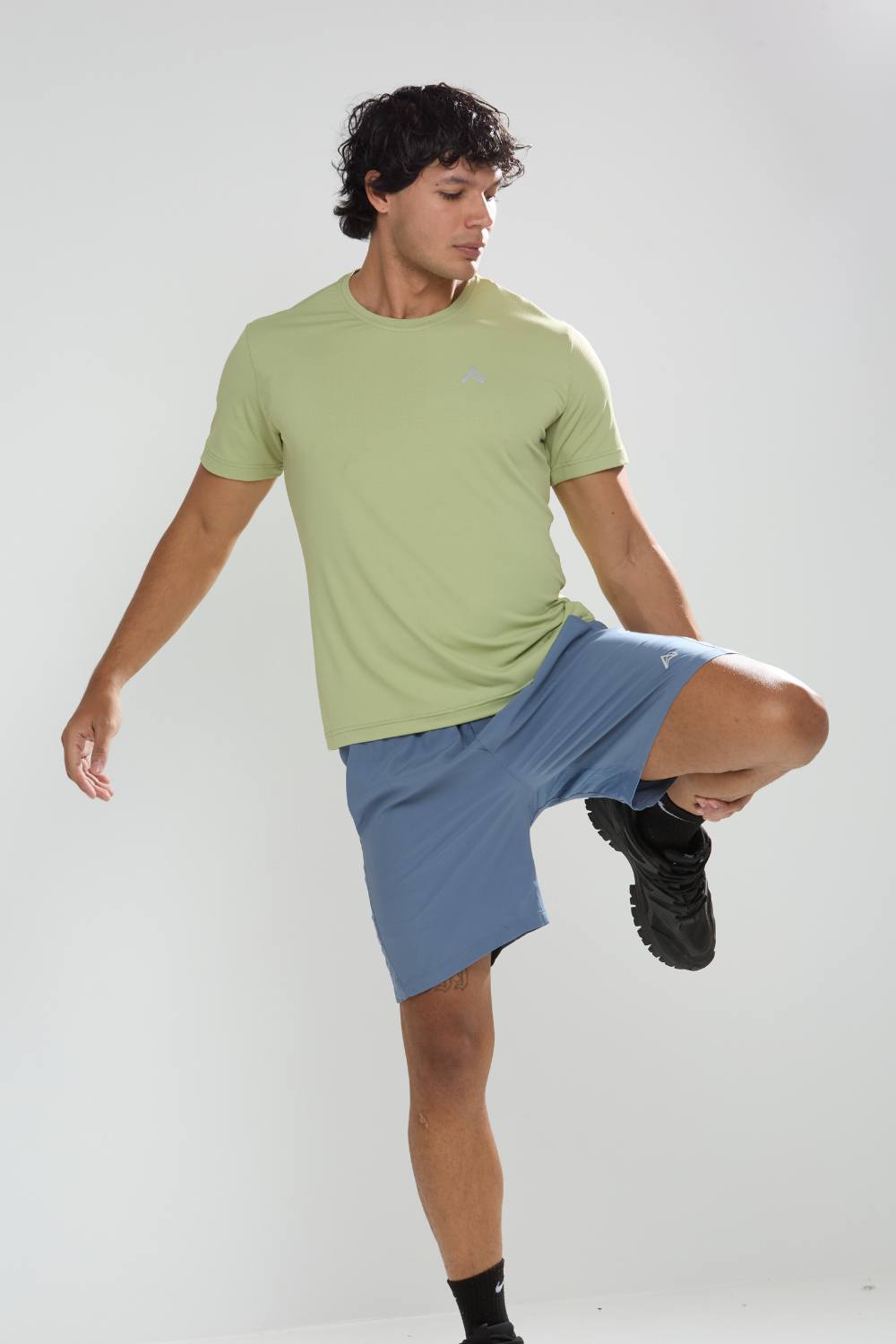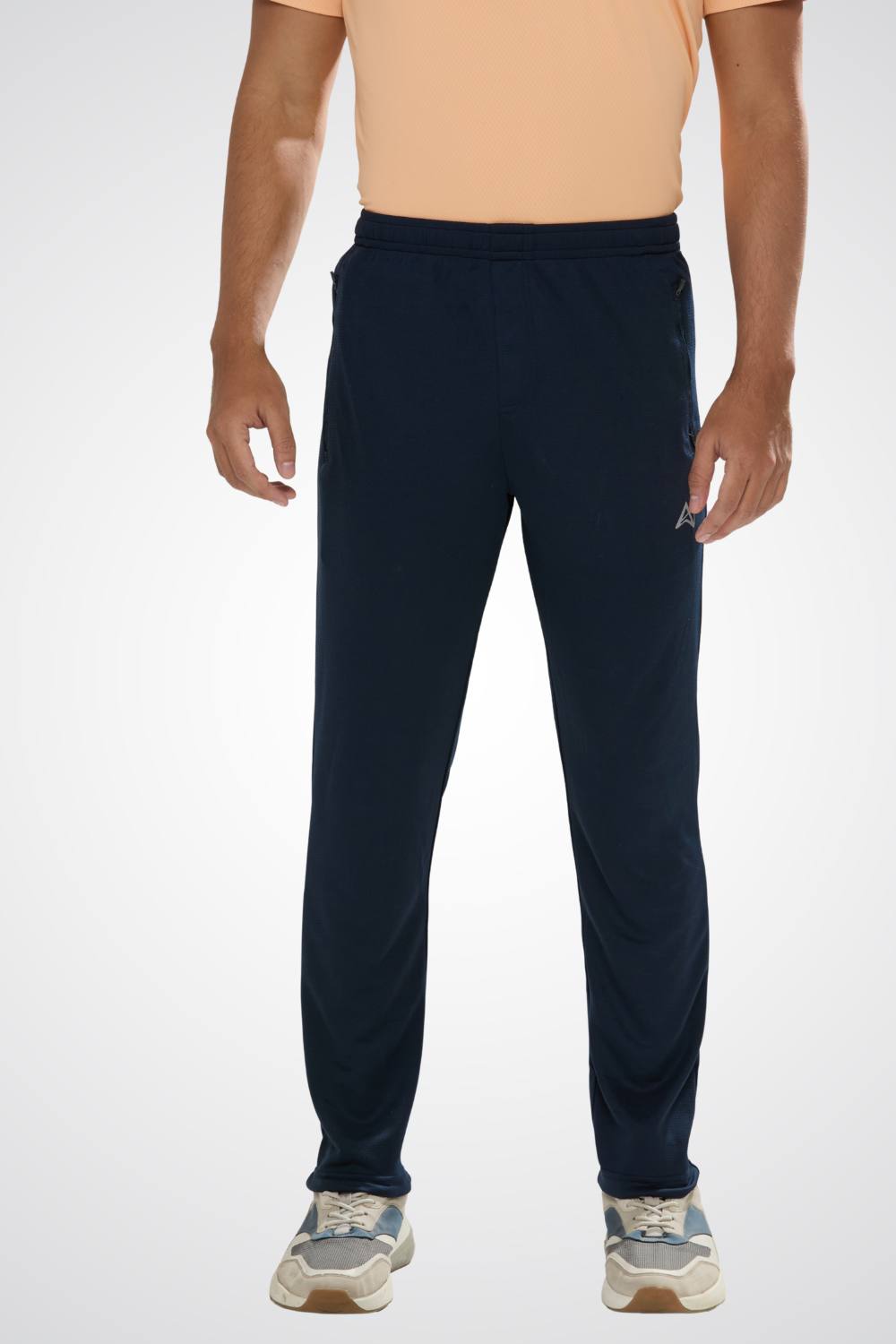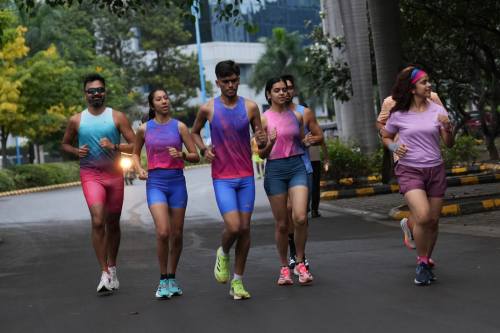Quick Listen:
The sharp blast of a whistle slices through the humid air, and a cluster of young women surges forward across a sun-baked field, their voices rising in a chorus of determination and delight. This isn't mere recreation it's defiance. In villages from rural India to urban sprawls in Brazil, women are donning sneakers, shattering stereotypes, and reclaiming their bodies as sites of strength. The ascent of women's sports isn't a fleeting trend; it's a seismic shift, propelled by grassroots programs and a burgeoning activewear market that's evolving to support every stride, leap, and pivot. At its core, this movement fuses physical vitality with economic possibility, turning sweat equity into lasting change. As sponsorships for women's leagues outpace men's by 50%, the apparel industry stands poised to amplify voices long sidelined.
Tired of gear that slows you down? Chafing, soggy fabrics, and missing pockets kill your run's momentum. At Aguante, we're runners who get it. Our high-performance activewear features moisture-wicking fabrics, ergonomic designs, and smart storage to keep you focused. Shop Now!
A New Era for Women in Sports
The terrain of global athletics is tilting decisively toward equity, with women leading the charge. Crowds pack stadiums for the Women's World Cup and tune in record numbers for WNBA games, fueling a revenue boom that's reshaping the industry. According to a June 2025 World Economic Forum analysis, this explosive interest translates to sponsorship growth 50% faster than in men's sports, yielding robust returns for savvy brands. Female stars aren't just competitors; they're catalysts for broader advocacy, championing causes from climate action to social justice, forging deeper bonds with consumers who crave authenticity.
Yet this progress casts stark shadows. Even as the sector swells, entrenched disparities endure. A landmark 2016 report on gender balance in global sports exposed a profound wage chasm, where women vie for scraps in an arena awash in billions, overwhelmingly steered by male interests. Fast-forward to today, and the global sports economy, which crested $73.5 billion back in 2019, still marginalizes women's contributions both on the field and in the boardroom. Participation rates for girls and women hover perilously low, hampered by a lucrative yet exclusionary framework that funnels profits away from those who need it most.
Movement initiatives emerge as vital countermeasures, orchestrated by apparel giants, nonprofits, and local collectives to bridge these divides. Far beyond drills and drills, these efforts instill resilience, strategic thinking, and vocational savvy through athletic engagement. Sport, as a dynamic classroom, hones leadership acumen and portable competencies that propel participants toward financial independence. Organizations underscore how physical pursuits can unlock livelihoods, countering the pervasive view in many households that such endeavors distract from domestic imperatives, deemed essential over "frivolous" leisure. The activewear realm, with its emphasis on adaptive gear, underpins this surge, ensuring that every participant feels equipped, not encumbered.
Delving deeper, consider the fiscal trajectory. Deloitte's March 2025 forecast pegs women's elite sports revenues at a groundbreaking $2.35 billion for the year, up from $1.88 billion in 2024 a testament to accelerating monetization. This isn't abstract; it's actionable intelligence for brands eyeing untapped markets. As McKinsey's August 2025 report asserts, the sector's revenues ballooned 4.5 times quicker than men's from 2022 to 2024, unlocking a $2.5 billion prize for those who invest wisely. Here, activewear isn't peripheral it's the engine, outfitting athletes who draw eyes and dollars alike.
Redesigning the Game: Trends in Female-Focused Sports
The activewear sector, long criticized for generic fits, is undergoing a profound redesign, prioritizing the biomechanics and preferences of female forms. Gone are the days of ill-suited hand-me-downs; today's lines boast compression shorts that stabilize without constriction, high-support bras calibrated for intense exertion, and footwear contoured for anatomical variances like narrower arches. These innovations transcend aesthetics they're empowerment incarnate, allowing women to focus on performance rather than friction.
Grassroots momentum compounds this shift. Coalitions worldwide, from urban fitness hubs to remote outposts, harness athletics to cultivate agency among marginalized groups. Nonprofits champion sports as conduits for essential life lessons, navigating cultural headwinds where familial expectations eclipse athletic pursuits, branding them distractions from chores. Yet persistence pays off: participants emerge with sharpened decision-making and interpersonal prowess, assets that ripple into professional spheres.
Technology weaves in seamlessly, democratizing access. Fitness trackers and AI-driven apps deliver personalized regimens, demystifying training for novices and elites alike. Fabrics embedded with sensors monitor vitals in real-time, while moisture-managing weaves keep athletes dry amid grueling sessions. Sustainability threads through it all recycled yarns and low-impact dyes appeal to eco-literate buyers, aligning personal health with planetary stewardship. As the global activewear market charts a 6.2% compound annual growth rate into 2025, per The Business Research Company's latest, women's segments lead the pack, buoyed by this conscientious convergence.
In the U.S. alone, activewear demand surges at 7.6% annually through 2030, with women commanding nearly half the revenue share, according to Grand View Research. This isn't serendipity; it's strategy. Brands that embed inclusivity from extended sizing to adaptive features for disabilities capture loyalty in a market valuing purpose over price. The result? A virtuous cycle where empowered consumers propel industry evolution.
Real Stories, Real Impact
Concrete examples illuminate the transformative power at play. Nike's enduring Girl Effect initiative, launched to spotlight adolescent girls as economic dynamos, has connected millions to vital resources in health, schooling, and opportunity. In South Asia and sub-Saharan Africa, where societal strictures stifle female agency, the program crafts secure arenas for play and growth, yielding measurable gains in confidence and community leadership. It's no coincidence that participants often parlay these experiences into entrepreneurial ventures, embodying the very ripple effect Nike envisioned.
Adidas counters with its She Breaks Barriers campaign, a multifaceted push since 2018 to dismantle access hurdles. Through mentorship pairings, stereotype-busting workshops, and visibility drives, it equips women and girls with tools to thrive. A flagship element, the Breaking Barriers Academy, offers online modules on gender equity, empowering coaches and administrators to foster inclusive environments. In emerging economies, these efforts have spiked enrollment in youth leagues, proving that targeted investment yields exponential returns.
Zoom in on the human scale: envision a teenager in a Kenyan outpost, once tethered to home tasks, now captaining her squad via a sponsored league her poise translating to a fledgling tailoring enterprise. Or picture a Chicago weekend warrior, leveraging virtual coaching to eclipse personal bests, galvanizing neighbors into a running collective. These vignettes aren't anomalies; they're the norm in ecosystems where apparel meets aspiration. Allied Market Research projects the women's activewear sector hitting $216.9 billion by 2025, a 8.8% online-fueled CAGR underscoring the commercial viability of such narratives.
Beyond binaries, intersectional lenses sharpen impact. Initiatives targeting Indigenous or LGBTQ+ athletes tailor support, amplifying underrepresented tales. As Forbes highlighted in its republication of the WEF piece, this advocacy extends to environmental fronts, with athletes modeling sustainable practices that brands amplify for mutual gain.
Hurdles on the Track
For all its velocity, the movement stumbles over persistent pitfalls. Societal scripts in conservative enclaves still consign women to sidelines, echoing Women Win's observations on leisure's perceived frivolity versus duty's primacy. Even in forward-leaning locales, crafting apparel that harmonizes efficacy, ergonomics, and allure across morphologies demands rigorous R&D failures here erode trust.
Market density intensifies the fray: with titans like Lululemon and Under Armour vying for share, differentiation hinges on genuine ethos, not gimmicks. Under Armour's adherence to UN Women's Empowerment Principles exemplifies this, embedding equality across operations to buttress credibility. Yet affordability looms largest; premium pricing sidelines low-resource cohorts, imperiling universality. True equity demands subsidies, scholastic tie-ins, and NGO alliances to democratize entry lest the surge sideline its intended beneficiaries.
Moreover, data gaps persist. While revenues climb, granular metrics on participation equity lag, complicating advocacy. S&P Global's August 2025 outlook flags 2025's marquee events like the Women's European Soccer Championships as litmus tests for sustained momentum post-Olympics.
Seizing the Opportunity
The imperatives are unequivocal: women's athletics brims with profit and purpose. Exploding activewear sales, as chronicled by Cognitive Market Research's 9.5% global CAGR projection to 2033, hinge on female fervor. Loyalty blooms from empowerment; patrons who perceive alignment with their values evangelize, fortifying ecosystems.
Innovation beckons boldly bio-responsive textiles, augmented reality fittings, expansive inclusivity. ESG elevation follows suit: purpose-driven portfolios allure investors, as Nielsen's 2025 Global Sports Report touts women's platforms as marketing juggernauts. The synergy? Brands accrue prestige; women accrue prospects. SportsPro Media's International Women's Day 2025 roundup spotlights campaigns like Nike's "So Win," which harness digital narratives to accelerate action.
A Finish Line Worth Running Toward
Gymnast Simone Biles captures the essence: "Today, do what others won't so tomorrow you can accomplish what others can't." This ethos pulses through the ascent of movement initiatives a paradigm pivot from marginalia to mainstream. Spanning Nairobi pitches to Manhattan mats, women assert dominion in domains once barred, with activewear as steadfast ally.
The horizon gleams: anticipatory textiles, barrier-free blueprints, relentless equity quests in a sector now eclipsing $2 billion annually. For enterprises, the directive rings clear: champion women, pioneer intentionally, forge inspiriting networks. For allies everywhere? Amplify, activate, advocate. For in every bound and breakthrough, women aren't merely competing they're rearchitecting realities, stride by stride.
Frequently Asked Questions
Why is the women's activewear market growing so rapidly?
The women's activewear market is experiencing explosive growth, projected to reach $216.9 billion by 2025 with an 8.8% annual growth rate, driven by several factors. The sector is undergoing a profound redesign with female-focused innovations like compression shorts, high-support sports bras, and anatomically-correct footwear that prioritize women's biomechanics. Additionally, the rise of women's sports viewership and sponsorship deals growing 50% faster than men's sports creates increased demand for performance apparel that supports this athletic revolution.
How are movement initiatives empowering women in sports today?
Movement initiatives are empowering women in sports by providing grassroots programs that combine athletic engagement with life skills development, leadership training, and economic opportunities. Organizations like Nike's Girl Effect and Adida's She Breaks Barriers campaign create secure environments for girls to participate in sports while building confidence and community leadership skills. These programs help women overcome societal barriers and translate their athletic experiences into entrepreneurial ventures and professional success.
What challenges do women still face in accessing sports and athletic opportunities?
Despite significant progress, women face persistent barriers including deeply rooted societal expectations that prioritize domestic duties over athletic pursuits, particularly in conservative communities. Economic obstacles remain significant, with premium activewear pricing excluding low-resource groups from participation. Additionally, the global sports economy still marginalizes women's contributions both on the field and in leadership positions, with entrenched wage gaps and limited access to funding and resources compared to men's sports.
Disclaimer: The above helpful resources content contains personal opinions and experiences. The information provided is for general knowledge and does not constitute professional advice.
You may also be interested in: Running Apparel Brands Focus on Indias Hot Climate
Tired of gear that slows you down? Chafing, soggy fabrics, and missing pockets kill your run's momentum. At Aguante, we're runners who get it. Our high-performance activewear features moisture-wicking fabrics, ergonomic designs, and smart storage to keep you focused. Shop Now!
Powered by flareAI.co





